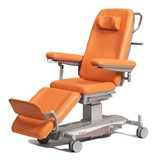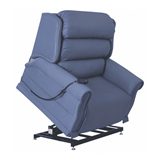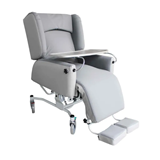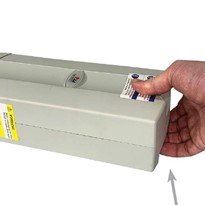So, you gained approval for a new procedure chair in your department but realistically, how long should it last for?
Well, procedure chairs are an expensive capital purchase for a long-term investment and much like buying your own fleet of motor vehicles. It is often explained that if you never serviced your car, how long would it take before there was a critical breakdown or harmful failure?
In the event of not being able to provide evidence of any servicing, would your car warranties hold up?
The best operating life of your treatment chairs comes down to two main factors – either the department or facility is small with very low transportation requirement and patient throughput, or the product is subjected to a periodic maintenance schedule that checks, adjusts or replaces broken or worn parts.
What is the expected life of a procedure chair?
Typically, in medical organizations, capital equipment is purchased and depreciated over 10 years. This is considered a fair life for a procedure chair given the demanding and continuous use that the products are expected to deliver. After this point in time, even though the product itself may appear to be sound, it is important to note that the unit will never feel or be operating as smoothly and efficiently as when it was new.
As framework and parts age, the inherent risk of breakdowns may increase. Any ongoing refinements, new technology improvements or changes to the product design over this long term are normally not reflected in old or existing equipment. Read more about what the 'lifetime' cost of a procedure chair is here.
What problems do I need to expect?
Depending on the frequency of use, normal wear and tear in a procedure chair starts at the wheels. The castors carry both the weight of both the chair and patient over many flooring surface types. The constant turning, twisting and vibration may cause the brake or steering mechanisms to change in adjustment and wheel roller bearings to eventually wear out. The average life expectancy of patient trolley castors is about 3 – 5 years. This can vary substantially based on the surface type (exposed concrete versus smooth vinyl) or the level of use (small day clinics versus large, busy hospital departments).
The brake and steer system may also require adjustment from time to time, this is best cared for in routine maintenance checks. Other items subject to high wear and tear are actuators, side rail pivots and locks, mattresses, and some electronic components such as handsets and batteries. All of this is easily covered off in a regular servicing plan which will help to extend the overall service life of the chair.
When should I replace a procedure chair?
You may be thinking, when do I retire a procedure chair?
It is good practice to review the age and daily use expectations on your capital equipment, deciding when to make the right call to replace or upgrade. It is not wise continuing to operate for many years over the expected lifetimes of capital equipment, until the age of the unit eventually results in major breakdown (or indeed a run of small issues). The downtime experienced by your product being out of service or any increasing risk of accidental harm to either staff or patients should be considered.
Your engineering or maintenance personnel are experienced at monitoring this type of equipment and can help with the decision process to continue funding repair versus starting from new again. Given how long the timeline can be for new funding approval, it is best to start working through the process well in advance, instead of waiting until sudden product failure causes urgent decisions or forced spending. This may result in rushed and uninformed decisions which can have an impact on both staff well-being and organizational efficiency for many years to come.
Where can I find my MODSEL service checklist?
Some parts of a chair such as castors, struts and bushes are subject to heavy daily use and will gradually wear. Periodic maintenance will increase the life of your product by controlling the speed of wear.
After each (12) twelve months of use, the chair must be checked in accordance with our recommended Service Checklist.
To service your chair, contact your Servicing Engineer, Distributor or Modsel.





-160x160-state_article-rel-cat.png)

























-205x205.jpg)

-205x205.jpg)


